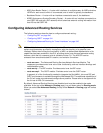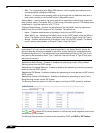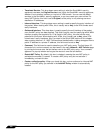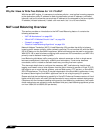
Network > Routing
346
SonicOS 5.8.1 Administrator Guide
Guidelines for Configuring Tunnel Interfaces for Advanced Routing
The following guidelines will ensure success when configuring Tunnel Interfaces for advanced
routing:
• The borrowed interface must have a static IP address assignment.
• The borrowed interface cannot have RIP or OSPF enabled on its configuration.
Tip SonicWALL recommends creating a VLAN interface that is dedicated solely for use as the
borrowed interface. This avoids conflicts when using wired connected interfaces.
• The IP address of the borrowed interface should be from a private address space, and
should have a unique IP address in respect to any remote Tunnel Interface endpoints.
• The Remote IP Address of the endpoint of the Tunnel Interface should be in the same
network subnet as the borrowed interface.
• The same borrowed interface may be used for multiple Tunnel Interfaces, provided that the
Tunnel interfaces are all connected to different remote devices.
• When more than one Tunnel Interface on an appliance is connected to the same remote
device, each Tunnel Interface must use a unique borrowed interface.
Depending on the specific circumstances of your network configuration, these guidelines
may
not be essential to ensure that the Tunnel Interface functions properly. But these guidelines are
SonicWALL best practices that will avoid potential network connectivity issues.


















